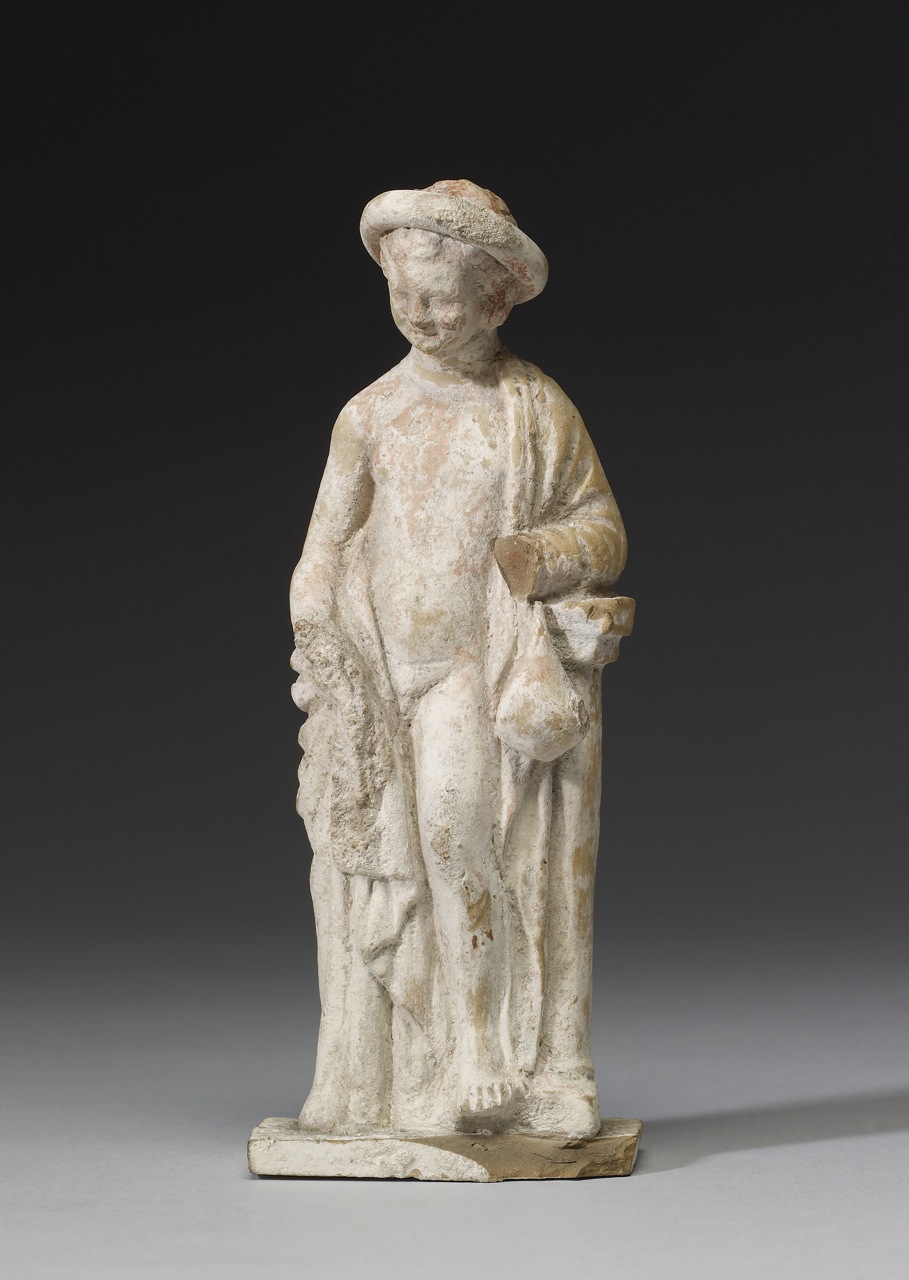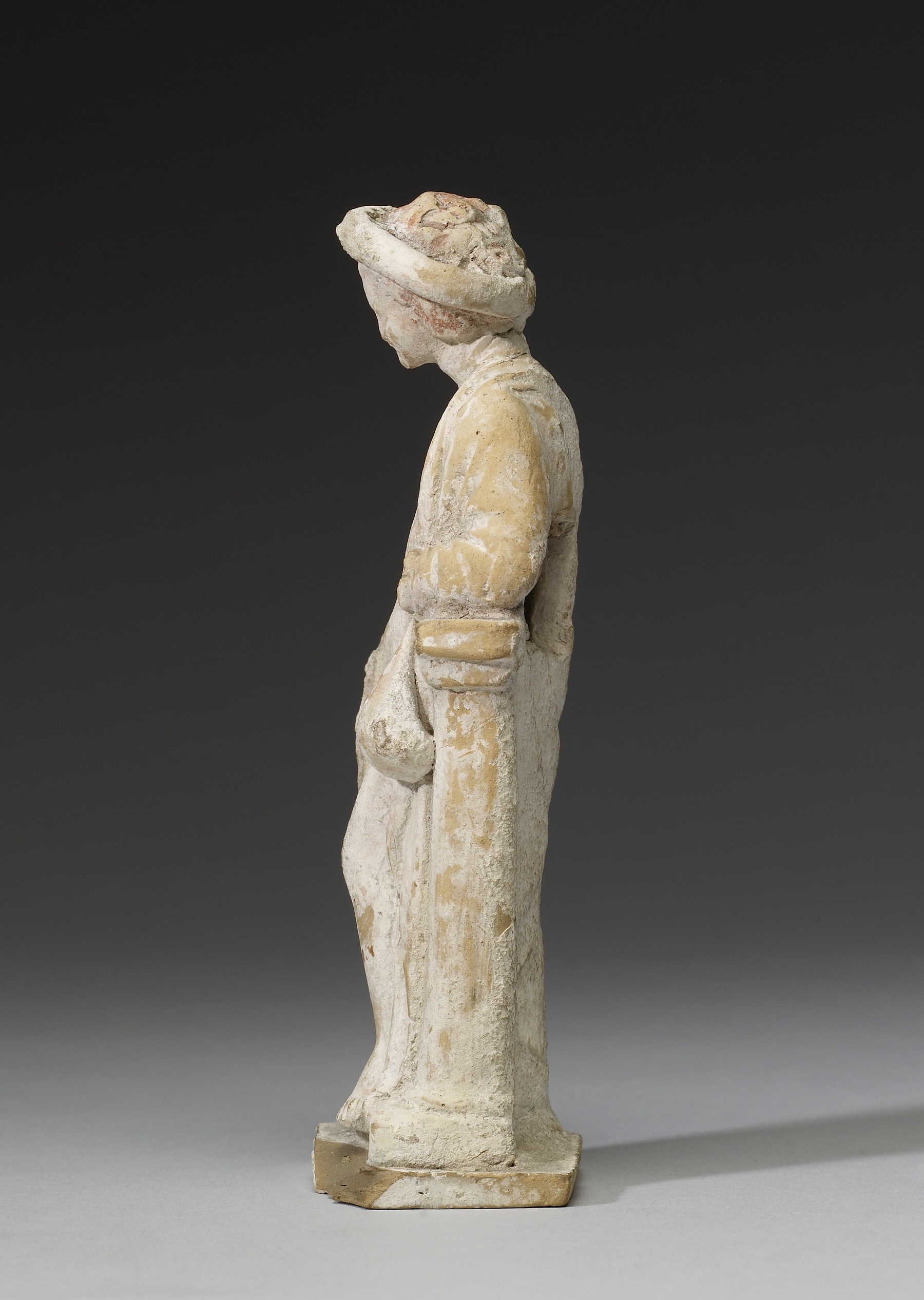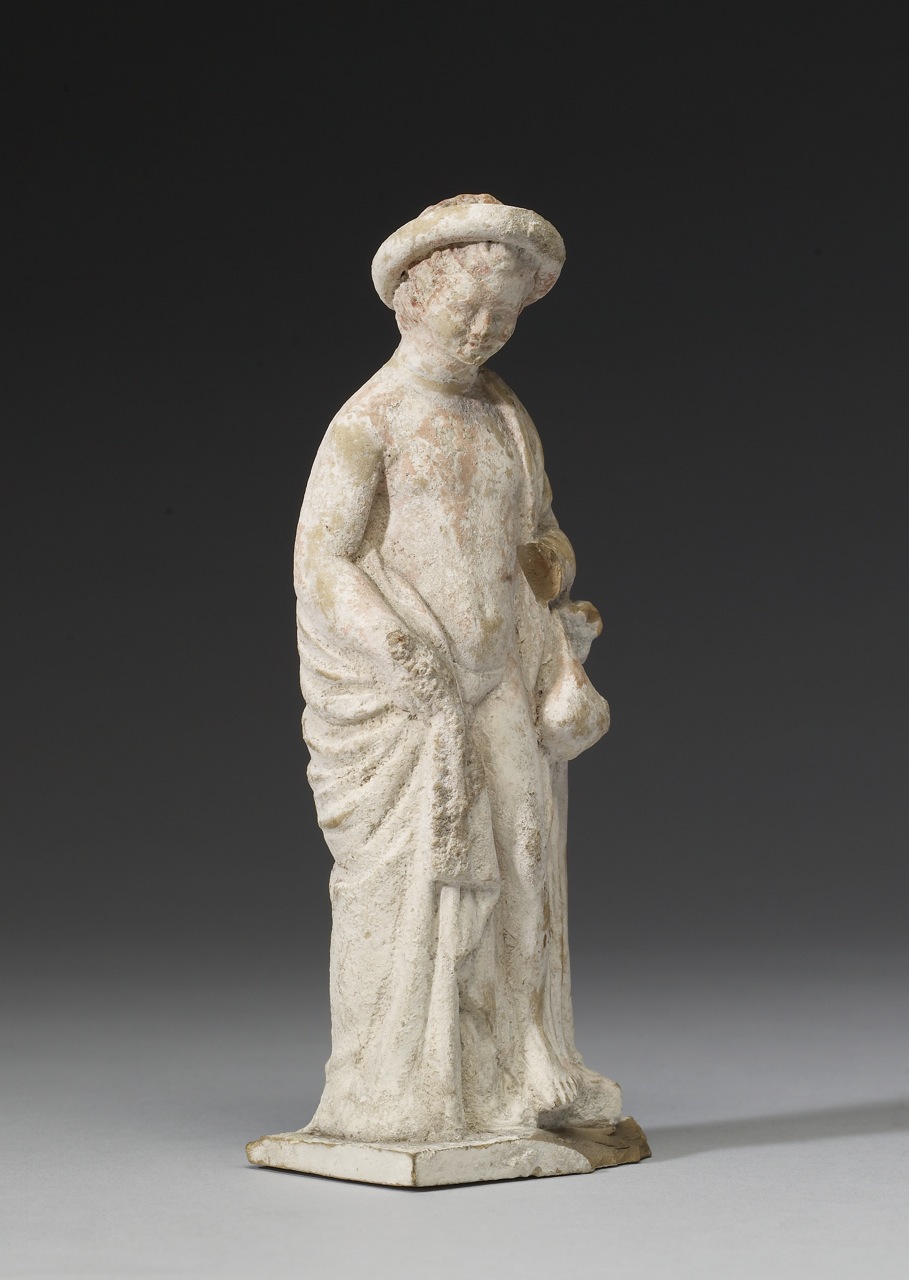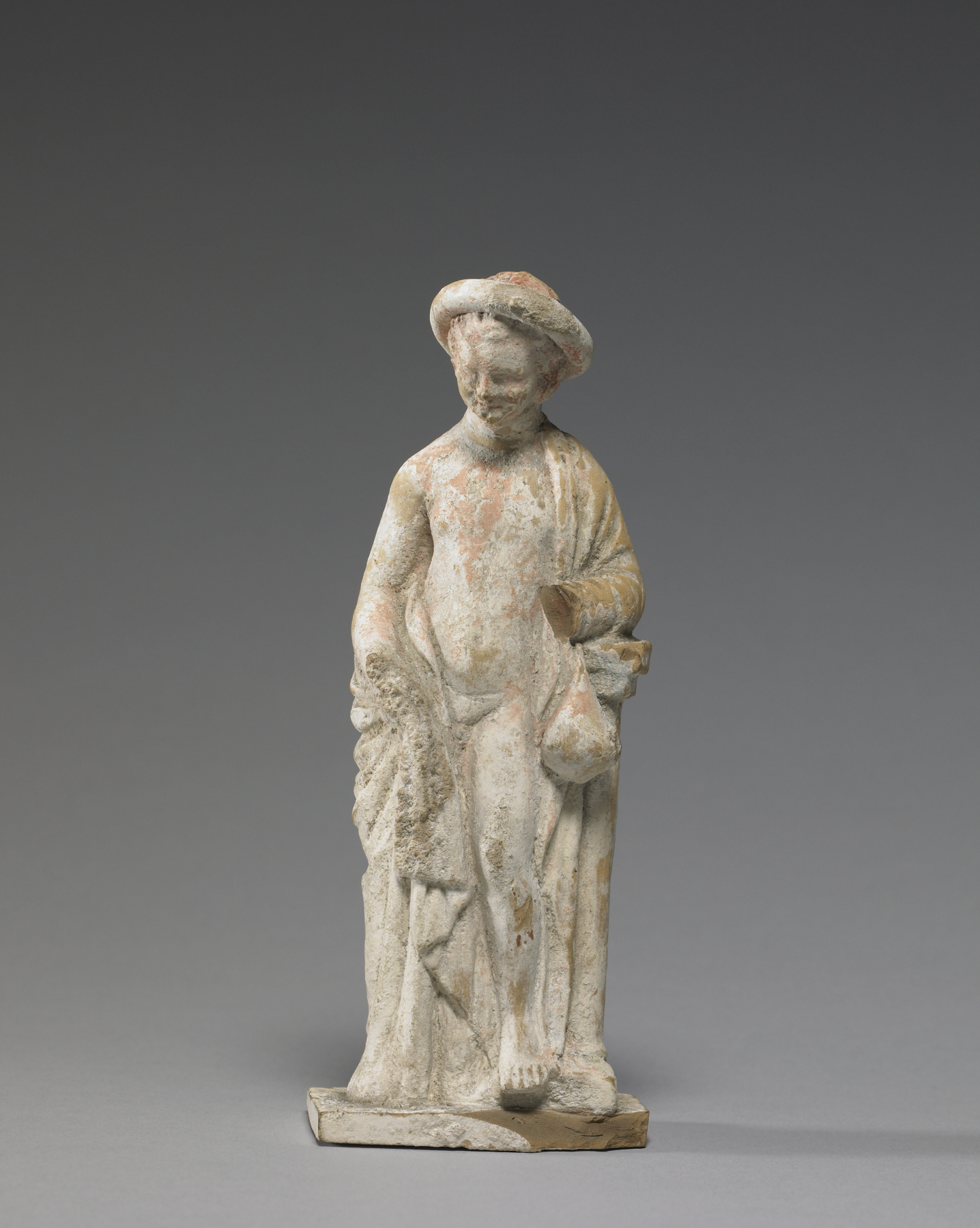Draped Boy Leaning on Pillar
(Ancient Greece )
This young boy is nude save for a mantle loosely draped around his back. He leans on a short pillar with his left elbow, his wreathed head directed downward and to his right. There is a sense of charm and sweetness in the way the artist has depicted the boy. Although his left hand is broken and missing, the bag he held still remains. The bag probably contained "astragali," or knucklebones of an animal, which were used in an ancient form of the game jacks. While the statuette is modeled in the round, the drapery is more schematic and flatter on the back. Extensive remains of white paint survive on his body and drapery. There is a square vent hole in the center of the back.
Although generally referred to as Tanagra figurines after the most famous findspot, Tanagra (modern Schimatari) in Boeotia, Greece, statuettes of this type have been found at other sites in the ancient world, including Myrina and Smyrna (modern Izmir) in Asia Minor. The most common forms of the statuettes depict young women sitting, standing, or in the process of graceful movement, but there are also examples showing men or children. The statuettes were used as grave offerings, votives, decorative objects, and perhaps toys. The hair, clothing, skin, and jewelry of the pieces were originally painted, although most of the colors are presently faded.
Provenance
Provenance (from the French provenir, 'to come from/forth') is the chronology of the ownership, custody, or location of a historical object. Learn more about provenance at the Walters.
Joseph Brummer, New York and Paris, [date and mode of acquisition unknown]; Henry Walters, Baltimore, 1925, by purchase; Walters Art Museum, 1931, by bequest.
Exhibitions
| 1988-1989 | From Alexander to Cleopatra: Greek Art of the Hellenistic Age. The Walters Art Gallery, Baltimore. |
Geographies
Greece or Turkey, Eastern Mediterranean (Place of Origin)
Measurements
H: 6 x W: 2 5/16 x D: 1 5/8 in. (15.2 x 5.9 x 4.1 cm)
Credit Line
Acquired by Henry Walters, 1925
Location in Museum
Accession Number
In libraries, galleries, museums, and archives, an accession number is a unique identifier assigned to each object in the collection.
In libraries, galleries, museums, and archives, an accession number is a unique identifier assigned to each object in the collection.
48.298














